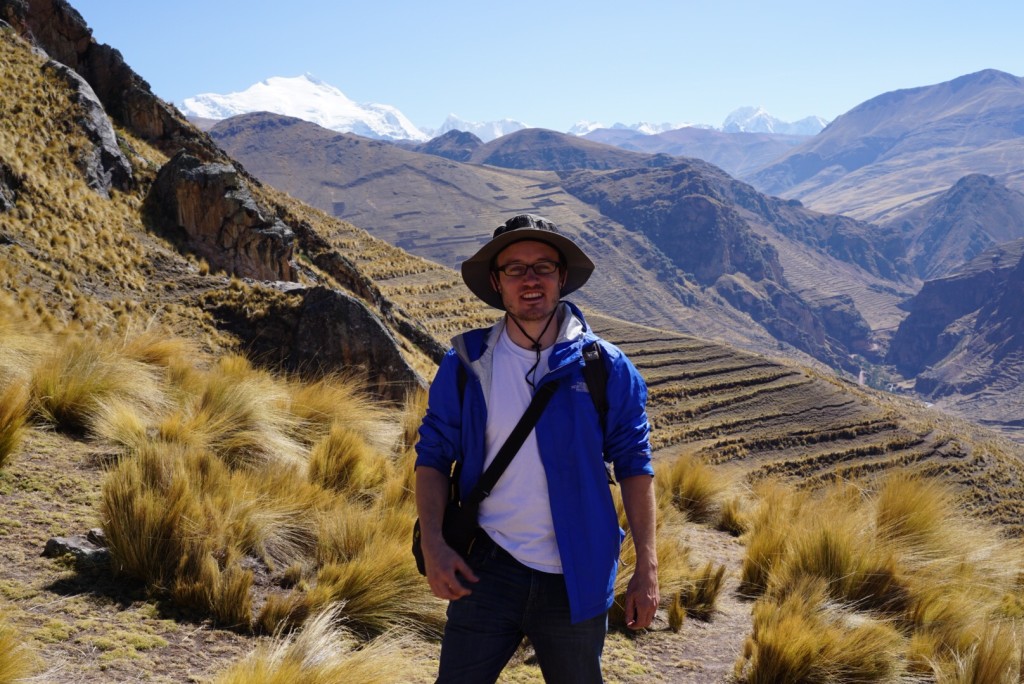Thursday started with very little remaining work: tightening a tapstand, checking and fixing leaks, and connecting the collection box to the springs. Without a hardware store nearby, these things turned out to be able easier said than done.
We have had a lot of problems with the 1/2″ galvanized pipe we used at each tapstand, partly due to really rough threading done by the local shop and partly due to its propensity to shear/snap/break at the worst times. For example, while tightening the final piece of tapstand 4, the entire pipe snapped, leaving the threaded portion inside the 90-degree elbow, which was completely encased in concrete. We were able to chip away the soft concrete (16 hours old) and expose the elbow enough to remove it. Fixing the pipe, however, would require a hike down the mountain and an hour drive to the machine shop. Even if the shop were open, there would be no way to rethread the pipe, drive back, and hike to the top on that same day. So Tap 4 was out of commission until Friday at the earliest.
Attempting to get back on track, we moved on and fixed leaks at junctions and tapstands through the whole system from bottom to top. Getting to the collection box, we realized that we did not have enough fittings to complete both spring connections. We had enough hardware to connect one spring, and we would have to connect the other spring on a different day.
Upon connecting the spring, we realized that we had a big problem: water was passing right through the collection box and out onto the ground, instead of going down the pipe to fill tanks 1 and 2! The local workers had created the concrete forms for the spring box by hand, perched on a 50% slope, with nothing but hand tools. This was no small feat, but lacking power tools or a drill, and in an effort to get things done quickly, they had decided it was too difficult to cut holes in the forms for any plumbing other than the main tank fill line.
Our design had called for three pipes out of the collection box, one for the tank fill line, one at the top for an overflow, and one at the bottom for a cleanout. For the overflow and the cleanout, they had placed small sections of PVC pipe inside the forms prior to pouring concrete. This was definitely better than nothing, but it meant that after the forms were removed we had a 1.5″ hole passing through the concrete at the bottom of the box, and no way to plug the hole with materials on hand.
Any solution that we came up with involved trips to a store and/or machine shop, so at the end of Thursday we had to hike down without being able to connect the springs to the system. This was hard for me as Thursday was my last day at the project, but I’m confident that all of Thursday’s issues can be fixed on Friday!
On the hike down on Thursday, a couple students offered to show me an old Spanish mine, and this turned out to be very impressive. The main tunnel, after a hundred feet or so, branched into four tunnels, and each one appeared to branch again multiple times. Basically, this was a big mine, and I have no idea how they could have carved the tunnels out of the solid rock given that the only access to the mine was basically an alpaca trail. I don’t know my minerals, and I didn’t spot any gold, but the tunnel walls had large bands of shiny blue, green, and yellow rock which looked quite amazing.
After I got over the crazy altitude (ie basically my last day there), I started to enjoy the hike to the project site, which had amazing views of Ausangate, a nearby 20,000+ foot mountain. Hiking down on Thursday, I took my time to enjoy the views, and to think about the water project. Hopefully Friday everything will be completed!

The heartbreak of concrete….sorry. EE